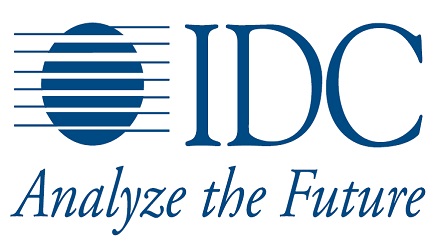E-Business
Non-Techie Businesses IT Budget to Exceed IT Organization- Report

A new update to the Worldwide Semiannual IT Spending Guide: Line of Business from the International Data Corporation (IDC) forecasts worldwide corporate IT spending funded by non-IT business units will reach $609 billion in 2017, an increase of 5.9% over 2016.
The Spending Guide, which quantifies the purchasing power of line of business (LoB) technology buyers by providing a detailed examination of where the funding for a variety of IT purchases originates, also forecasts LoB spending to achieve a compound annual growth rate (CAGR) of 5.9% over the 2015-2020 forecast period.
In comparison, technology spending by IT buyers is forecast to have a five-year CAGR of 2.3%. By 2020, IDC expects LoB technology spending to be nearly equal to that of the IT organization.
“Companies’ adaptation of Innovation Accelerators, such as Internet of Things, Cognitive/AI systems, and 3D Printing, together with the four Pillar technologies of the 3rd Platform, to both new product and service developments and day-to-day business operations has fundamentally increased Line of Business spending on IT,” said Naoko Iwamoto, senior market analyst with the IDC Japan IT Spending Group.
“The Innovation Accelerators have put the line of business units in the frontline of the digital transformation and have forced them to work either alone with the ecosystem outside of the IT organization as ‘shadow IT’ or in closer collaboration with the IT department than ever before.”
IDC’s Line of Business taxonomy identifies two major types of technology spending – purchases funded by the IT organization and purchases funded by technology buyers outside of IT. Joint purchases can be funded by either IT or the functional business unit while “shadow IT” projects are funded from the functional area budget without the knowledge, involvement, or support of the IT department.
Although some technology categories are dominated by IT spending, most involve outlays from both IT and the business units. For example, worldwide IT spending on servers, storage, and network equipment is forecast to total $114.1 billion this year, while LoB spending on these items will total $52.9 billion.
However, IT is not the primary source of funding for all hardware purchases. Business unit spending on PCs, monitors, mobile phones, printers, and tablets will total $83.8 billion worldwide this year compared to $76.2 billion spent by the IT department. And line of business buyers will spend more on software applications in 2017 ($150.7 billion) than IT buyers ($64.7 billion).
The technology categories that will see the most spending from LoB buyers in 2017 will be applications ($150.7 billion), project-oriented services ($120.3 billion), and outsourcing ($70.3 billion).
The categories that will receive the most spending from IT buyers this year will be outsourcing ($149.2 billion), project-oriented services ($82.2 billion), and support and training ($79.8 billion).
Combined IT-LoB purchases of outsourcing and project-oriented services ($422 billion) will represent nearly one third of all technology spending worldwide in 2017. The technology categories that will see the fastest growth in spending over the 2015-2020 forecast period are tablets (16.2% CAGR for IT and LoB purchases combined) and midrange enterprise servers (14.7% combined CAGR).
LoB buyers will also continue to invest aggressively in applications and application development and deployment (8.5% and 9.3% CAGRs, respectively).
In 2017, IDC expects LoB technology spending to be larger than IT organization spending in five industries: discrete manufacturing, healthcare, media, personal and consumer services, and securities and investment services.
By 2020, this number is forecast to grow to nine as the insurance, process manufacturing, professional services, and retail industries see LoB purchases move ahead of IT purchases. The industries with the fastest growth in LoB spending are professional services (6.9% CAGR), healthcare (6.6%), and banking (6.5%).
However, LoB technology spending is forecast to grow faster than that of the IT organization in all 16 industries covered in the spending guide.
On a geographic basis, the IT organization will be the largest source of technology spending throughout the forecast in all but four countries: the United States, Canada, Saudi Arabia, and the United Arab Emirates.
And like the industry trend, LoB spending is forecast to grow at a faster rate than IT-led technology spending in nearly every country.
The countries that will experience the fastest LoB spending growth include Indonesia and the Philippines (each with a 12.2% CAGR), Argentina (11.1% CAGR), Peru (8.7% CAGR), and India (8.4% CAGR).
“Explosive cloud and other 3rd Platform technology adoption is enabling U.S. lines of businesses to rely less on enterprise IT than any other country to fund their technology purchases,” said Eileen Smith, program director, Customer Insights and Analysis.
“On average, U.S. line of business will fund 62% of their technology purchases in 2017. Looking to increase productivity and reduce organizational costs, IDC expects supply chain, human resources, and sales executives will fund the largest share of their companies’ technology purchases over the forecast period.”
“While the LoB-funded IT spending shows steady growth of 3.1% CAGR in the forecast period in Japan, almost 70% of technology spending comes from IT with a 1.3% CAGR,” said Iwamoto.
“As the competition escalates in the worldwide marketplace as well as with the disruptors from different industry segments, Japanese companies are trying to hold their position by employing a globally standardized IT and business processes initiated at the headquarters. The reinforcement of the IT governance among Japanese large enterprises will keep the higher ratio of IT funded.”
The IDC Worldwide Semiannual IT Spending Guide: Line of Business quantifies the purchasing power of the non-IT department technology buyer by detailing enterprise IT spending for 20 technologies and 12 corporate functional areas across 16 enterprise industries in eight regions and 53 countries.
This IDC Spending Guide provides a granular view of the market for IT spending from a geographic, industry, functional (LoB), and technology perspective. Unlike any other research in the industry, the LoB Spending Guide was designed to help business and IT decision makers to better understand the scope and direction of corporate technology spending over the next five years.
E-Business
Zequence Digital Boss Calls for Strong IP Laws Enforcement, to Protect Nigeria’s Software Sector

Mr Adeoye Oludamilola, managing director, Zequence Digital, a digital agency, has said strong enforcement of Intellectual Property (IP) laws , protection of Nigeria’s software industry against piracy will encourage innovation and investment.

Adeoye told reporters lately in Lagos that software piracy and the unauthorised use of proprietary technology are widespread in the country.
According to report Intellectual Property (IP) laws in software refers to the legal rights that protect the creations of the mind used in software development.
These rights, which include copyrights, patents, trade secrets, and trademarks, grant developers exclusive control over their software and related assets, preventing unauthorised use or reproduction.
Adeoye said that many startups do not protect their innovations, due to a lack of knowledge and the cumbersome legal processes involved.
“IP registration and litigation are expensive and time-consuming, which further discourages developers from protecting their work,” Adeoye said.
He added that the lack of awareness among developers about their IP rights contributed to the problem.
To address these challenges, Adeoye stressed the need for the formation of an IP Protection Consortium, comprising tech firms, legal experts, and regulators, to advocate for stronger IP enforcement.
He also suggested collaborating with legal tech startups to create simplified platforms for fast-tracked IP registration.
The managing director further called for joint initiatives between legal bodies and tech communities to launch IP rights education campaigns.
This, he said, would equip developers with the knowledge they needed to protect their innovations and grow their businesses.
Adeoye emphasised the need for the government and stakeholders to create an ecosystem for development and inclusivity by proactively engaging with regulators.
According to him, this will help ensure that policies are created with the input of concerned agencies and industry experts.
E-Business
PalmPay Partners AXA Mansard Health to Make Digital Insurance Accessible, Affordable

PalmPay, a leading fintech platform and full-stack digital neobank for emerging markets, has partnered with Nigeria’s biggest Health Insurance Company, AXA Mansard Health a member of the globally trusted AXA Group, to provide millions of Nigerians with affordable, accessible digital health insurance.

This strategic partnership enables PalmPay users to seamlessly access a range of health insurance packages from AXA Mansard directly within the PalmPay app. With plans starting as low as N500 per month, users can now choose from flexible insurance options tailored to fit their everyday needs.
The plans are designed to meet a wide range of needs; for example, the AXA Digital Health plan offers access to telemedicine consultations with doctors, N5,000 worth of medications, and up to N40,000 in surgical coverage. Users can also opt for the AXA Mansard MicroHealth plan at N1,000 per month, which provides unlimited diagnostic tests and funeral benefits. Additionally, the AXA Mansard Accident plan, available for N500 monthly, offers comprehensive death cover for both accidental and non-accidental cases.
Speaking on the partnership, Habib Kowontan, Head of Wealth Product at PalmPay, said: “Insurance is a key pillar of financial security, yet millions of Nigerians remain underserved. Our partnership with AXA Mansard Health breaks down long-standing barriers by placing reliable and affordable insurance solutions right at our users’ fingertips.”
In her remarks, Jumoke Odunlami, Chief Distribution Officer, AXA Mansard Insurance said that the partnership with Palmpay presents the AXA with another opportunity to improve health and productivity of Nigerians. “Through partnerships like this, we are covering over 1.8 million Nigerians and ensuring that healthcare is accessible, available and affordable.
“So we are excited about joining forces with a brand like Palmpay to compliment the range of financial possibilities they offer their customers with health plans. It fits well with our mission and our purpose of acting for human progress by protecting what matters, and we are looking forward to doing even more with Palmpay”, she explained.
This partnership reflects PalmPay’s broader mission to create a more inclusive digital financial ecosystem, one that empowers users to not only manage their money efficiently, but also secure their future.
This partnership reflects PalmPay’s broader mission to create a more inclusive digital financial ecosystem, one that empowers users to not only manage their money efficiently, but also secure their future.
E-Business
Artificial Intelligence: The Indispensable Catalyst for Nigeria’s Agricultural Revolution

By Diana Tenebe, Chief Operating Officer, Foodstuff Store
Nigeria’s agricultural sector, a cornerstone of its economy, faces a critical crossroads. While employing a staggering 40% of the population and holding over 84 million hectares of arable land, the industry is hobbled by deep-seated challenges. Low productivity, a fragmented supply chain, poor infrastructure, and a lack of access to financial services are just a few of the hurdles that prevent the sector from reaching its full potential. Coupled with the unpredictable and severe shocks of climate change—from prolonged droughts to devastating floods—these issues threaten the food security of a rapidly growing population.

Diana Tenebe
To truly transform this vital sector, a new approach is needed, one that moves beyond traditional methods and embraces the power of technology. Artificial Intelligence (AI) is not just a futuristic buzzword; it is the imperative for Nigeria’s agricultural revolution. AI holds the key to unlocking higher yields, building resilience, and fostering an inclusive and sustainable food system that can feed a nation and drive economic growth.
The most immediate impact of AI is in the area of precision farming. By integrating AI with technologies like Internet of Things (IoT) sensors, drones, and satellite imagery, farmers can gain an unprecedented understanding of their land. AI-powered systems can analyse real-time data on soil moisture, nutrient levels, and plant health, providing actionable insights for targeted interventions. For instance, smart irrigation systems can optimize water usage, a critical resource in a country facing increasing water scarcity. AI-enabled drones can survey vast farmlands in minutes, identifying early signs of pests or disease and allowing for precise application of pesticides, reducing chemical use and cost. Early trials of these technologies in Nigeria have already demonstrated significant gains, with some reports showing a remarkable 60-70% increase in crop yields.
Climate adaptation is another area where AI’s role is indispensable. Nigeria’s farmers are on the front lines of climate change, enduring erratic rainfall and extreme weather events. AI can provide a shield against this volatility. By analyzing historical weather data and real-time forecasts, AI models can offer accurate, localized predictions. This allows farmers to proactively adjust their planting schedules, select climate-resilient crop varieties, and plan for potential risks, effectively mitigating the devastating impact of droughts and floods.
The economic benefits extend far beyond the farm gate. A significant portion of Nigeria’s agricultural produce is lost due to an inefficient and fragmented supply chain. AI can streamline logistics, optimize transportation routes, and enhance inventory management. By reducing spoilage and waste, AI ensures that more of what is harvested reaches the market, thereby boosting the incomes of farmers and providing a more stable supply of food for consumers. The success of Nigerian agritech companies like Crop2Cash, which has reportedly helped over 500,000 farmers increase their income by up to 70%, demonstrates the tangible economic impact of these technologies.
AI is a powerful tool for promoting financial inclusion and education. Millions of smallholder farmers, who form the backbone of Nigerian agriculture, are often excluded from formal financial systems due to a lack of collateral and credit history. AI-driven fintech solutions can bridge this gap by assessing creditworthiness using alternative data, making it easier for farmers to access the loans and insurance they need to scale their operations. AI-powered mobile apps and chatbots can also serve as virtual extension agents, providing personalized advice on best farming practices, pest control, and crop management, democratizing knowledge and empowering farmers to make better decisions.
Despite this immense potential, the journey towards widespread AI adoption is not without its hurdles. High upfront costs for AI-enabled equipment, a general lack of understanding and experience with these tools, and a preference for traditional methods are all significant barriers. Furthermore, infrastructural gaps, including poor roads and inadequate storage facilities, hinder the seamless implementation of these technologies. Data availability and computational capacity are also key challenges that need to be addressed.
However, the Nigerian government and a burgeoning ecosystem of agritech startups are already paving the way forward. The government’s vision is articulated in initiatives like the National AI Strategy, which aims to establish AI research centers and support R&D. Programs such as the Nigeria Artificial Intelligence Research Scheme (NAIRS) and the NITDA AI Developers Group are building the necessary skills among entrepreneurs and farmers. Strategic partnerships between government bodies, financial institutions, and innovative startups are creating localized solutions that are tailored to the unique conditions of Nigerian agriculture.
Ultimately, AI is not a luxury but an imperative for Nigeria to unlock its agricultural potential. Its successful integration will transform the role of the farmer from a manual laborer to a strategic planner and overseer of a smart, efficient, and sustainable food system.
By investing in infrastructure, fostering strategic partnerships, and prioritizing education and capacity building, Nigeria can harness the power of AI to feed its people, drive economic prosperity, and secure its place as a leader in the African agricultural revolution.

 Telecom2 days ago
Telecom2 days agoMTN’s mPulse Spelling Bee Returns with Regional Competitions and ₦40M in Prizes

 Telecom2 days ago
Telecom2 days agoMTN Nigeria Launches Cloud Accelerator to Power Africa’s Startup Future

 E-Business2 days ago
E-Business2 days agoArtificial Intelligence: The Indispensable Catalyst for Nigeria’s Agricultural Revolution

 Telecom2 days ago
Telecom2 days ago9mobile Rebrands as T2, Vows to Shake Up Telecom Sector

 Broadcasting2 days ago
Broadcasting2 days agoAmaarae Crowned Spotify’s EQUAL Africa Artist for August

 Telecom2 days ago
Telecom2 days agoNigeria Mulls Trust Fund to Preserve Telecom Infrastructure

 General News2 days ago
General News2 days agoNigerian Scientists Await Return of Egusi Seeds Sent to Space

 News7 hours ago
News7 hours agoGoogle Hit by AI-driven Cyber Attack















